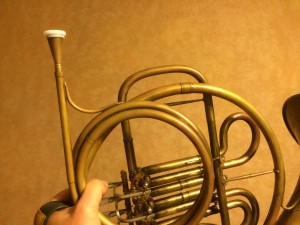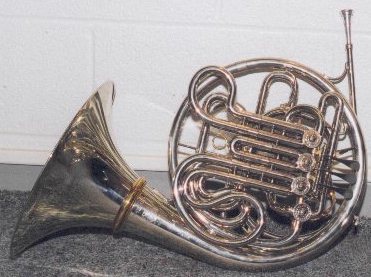Recently received was a question from Pierre-Antoine Tremblay (website here). He had very recently recorded Reinecke’s 1906 Trio for horn, clarinet and piano on period instruments. Before turning to the questions, his video of the first movement is below. Hit play, check it out! The period horn offers a unique sound (video direct link here).
This work is one that I would actually noodle around on when practicing for my 19th century horn project (described in a series of articles starting here). It seems to me very suited to being played on a single F horn — it feels great on the period valved horn. Pierre-Antonie asked several things in his note, one being about a possible Gumpert-Reinecke connection and another being possible use of Kruspe horns by Gumpert. He had noted “the obvious [connection,] that they were colleagues both at the Gewandhausorchester and at the Conservatory.” Certainly Reinecke could have been thinking of Gumpert, but aside from that obvious connection I don’t know that the trio is associated with any horn player, he worked with many, and Gumpert had been retired from performing for several years by 1906. Theoretically for example Reinecke could have been thinking of B. Ed. Müller, who was second horn in the Gewandhaus Orchestra and is best remembered today for his etudes, or principal hornist Arno Rudolph. As to horns and Gumpert, I can only offer what his student Anton Horner stated in 1956:
[Gumpert] had no use for the B-flat horn which was coming into use in Germany at that time; but he did advocate changing crooks or slides to G, A, and B-flat horn for some compositions. For instance, he played the Siegfried solo on the B-flat horn, and the slow movement of the Second Beethoven Symphony on the A crook; also played the Mendelssohn Nocturne on an E crook. The old German conductors like Reinecke in Leipzig, Bühlow [sic] in Berlin, and others would not tolerate the thin, harsh quality of the B[flat] horn, unless the composers called for that quality in their compositions, when they wrote for the G, A-flat, A, and B-flat horn. Of course, we, of today, think these restrictions are splitting hairs, but that was the opinion that prevailed in those days. I know that in many orchestras, when there were auditions for vacant positions, B[flat] horn players were not even considered. But eventually, B[flat] horn specialists were considered, when such excellent players as Preusse in Frankfurt proved and demonstrated its advantages [Horner, 91].
That quote is from a longer article that may be read here. That his nephew was working with Kruspe to develop horn designs is a decent indication that Gumpert might also have been a Kruspe player, but I don’t have any further evidence, the question is so far as I know open.
 And also note: Reinecke is cited by Horner as a being among “old German conductors” who “would not tolerate the thin, harsh quality” of the B-flat horn, who preferred the F horn. Again, it really seems to be the instrument he has in mind for the his chamber music works, this photo showing the instrument used by Tremblay.
And also note: Reinecke is cited by Horner as a being among “old German conductors” who “would not tolerate the thin, harsh quality” of the B-flat horn, who preferred the F horn. Again, it really seems to be the instrument he has in mind for the his chamber music works, this photo showing the instrument used by Tremblay.
Check out the video above and the following movements, it is very well done and really gives the flavor of what the F horn sounds like. The sound is not quite what you would imagine, there is a bit of a wilder quality to the sound in the upper register that adds something really. Once you adjust to it in fact a double or triple horn does sound duller. I believe this same tonal difference will come across in my recording project as well, which is in editing at this time. More on that soon.
And to close, a special bonus recording, which I was pointed to by reader Jay Anderson after my recent article “Will the real B. Ed. Müller please stand up?” (see the comments there). Recorded in 1904, it includes two of the Leipzig players I mentioned above, B. Ed. Müller and Arno Rudolph, second and first horn respectively with the celebrated horn quartet of the Gewandhaus Orchestra. Oh but to hear this group live, but the old recording gives a good hint of their sound and it is so interesting as well to realize that you are hearing the playing of one of the writers of classic horn etude materials! There is a missed note at 1:51 (probably the third horn), and the general level of playing also reminds us that things have come a long way for the horn in the last 100 years. (Video direct link here).
Photo source: YouTube

 But backing up, I made my original two solo CDs (
But backing up, I made my original two solo CDs (
 Triple Horn with master horn builder Jim Patterson at Patterson Hornworks. It is this combination that Mr. Kovach uses on stage and in concert.
Triple Horn with master horn builder Jim Patterson at Patterson Hornworks. It is this combination that Mr. Kovach uses on stage and in concert.


















